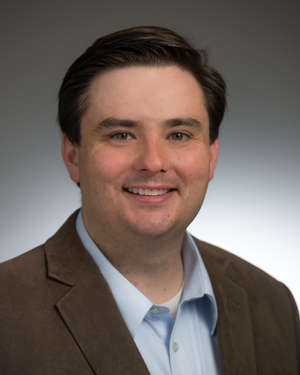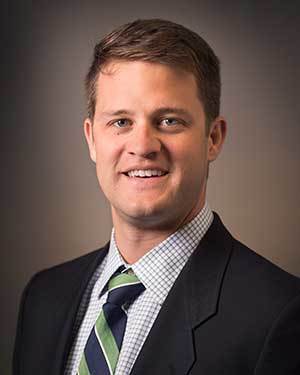
As state leaders and public health officials weigh options to reopen businesses and ease social distancing guidelines, scientists have launched studies tackling two key factors for determining next steps. Researchers at the University of Notre Dame are looking at short-term forecasts of potential infection and are monitoring spread of the coronavirus in wastewater.
Agent-based modeling for short-term projections

Understanding the impact of interventions such as shelter-in-place orders, school closures, social distancing and working from home is complex because these efforts depend on the patterns and structures of how people come in contact with one another, which varies, said Alex Perkins, the Eck Family Assistant Professor in the Department of Biological Sciences and an expert in infectious disease epidemiology and population biology.
“In many epidemiological models, it’s not possible to implement those types of interventions in a straightforward way,” he said. Using an agent-based model, which simulates individuals and their movement patterns, Perkins and his team are aiming to build more accurate projections of how the coronavirus could spread in the short term, based on how we live, work and move.
“By simulating individuals under normal circumstances — how much time they spend at home, at work, at school or the store — you can test the impact of certain interventions and gain a better understanding of what the most appropriate interventions may be,” Perkins said.
Agent-based models are computationally intensive. When simulating individuals, there are a lot of ways those dynamics can affect the outcome — just like in reality. Perkins not only wants to build parameters around his model to be consistent with what scientists know about the coronavirus, but he is also looking at how to speed up the process of fitting the model to the data, to aid decision-makers with projections quickly.
“What we want to do is get to a place where we can say, ‘This shelter-in-place order expires in a few days — what happens if we extend it over the next two weeks?’” Perkins said. “We want to be in a position to continually update this model as the situation progresses, because the nature of the situation is changing really fast. From one week to the next there seem to be different concerns and different questions that need to be addressed.”
Perkins will report results to the Centers for Disease Control and Prevention to support efforts to collect a range of projections and create comprehensive ensemble projections related to the coronavirus.
Wastewater-informed epidemiological monitoring

Asymptomatic infection of the coronavirus has presented a unique challenge to public health officials trying to get an accurate estimate of the number of cases and potential for continued spread of the virus.
Kyle Bibby, an associate professor and the Wanzek Collegiate Chair in the Department of Civil and Environmental Engineering and Earth Sciences, and his team have begun monitoring wastewater in the Great Lakes region to develop methods of virus detection in the environment. In a unique effort, Bibby will collaborate with Perkins to connect measurements from wastewater samples to epidemiological models. Doing so will allow the team to compare rates of exposure, onset of symptoms, transmission and detection.
Wastewater systems have been used in the past as a tool for measuring and tracking other infectious diseases such as poliovirus, norovirus and measles. Monitoring for the coronavirus in wastewater could alert public health officials when the virus is present in a community before traditional prediction methods, like testing, and estimate how many people in that community are actually carrying the disease.
“One of the problems we have now is poor data on how many people are actually carrying the virus because testing is so difficult and so many people are asymptomatic,” Bibby said. “If we consider the possibility that this could become endemic, a seasonal disease like the flu, periodic monitoring could alert a community when the virus is present and inform decisions on an appropriate response.”
Bibby is an affiliated member of the Environmental Change Initiative, the Advanced Diagnostics and Therapeutics Initiative and the Eck Institute for Global Health at Notre Dame. Perkins is an affiliated member of Notre Dame’s Eck Institute for Global Health.
Each study is supported by the National Science Foundation through a Rapid Response Research (RAPID) grant.
Originally published by at news.nd.edu on May 07, 2020.